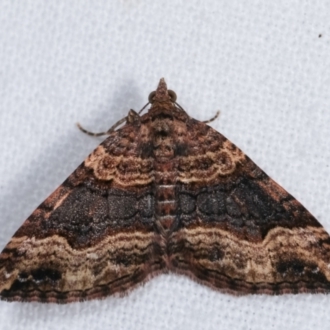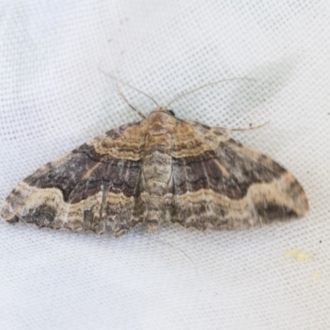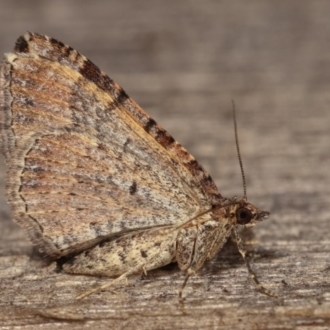Epyaxa subidaria (Subidaria Moth)
,<p class="MsoNormal">Epyaxa subidaria and sodaliata are common and widespread species that can be difficult to distinguish. </p>
<p class="MsoNormal"> Epyaxa subidaria are generally larger, lighter and a little browner than E. sodaliata, but that does not help much in identifying a photo. Both species are variable in their forewing patterns.</p>
<p class="MsoNormal"> For both species, males have branched antennae and females have linear antennae. Males of both species generally have lighter forewings than the females.</p>
<p class="MsoNormal"> Both species have a transverse band across the centre of the forewing that is wholly or partially dark. In Epyaxa subidaria males it usually contrasts more with the inner and outer lighter areas of the wing than it does in E. sodaliata.</p>
<p class="MsoNormal"> Females of E. sodaliata are often almost black (although the central band is still present). The boundary between the central band and the outer forewing in E. subidaria females is often a conspicuous broad light wiggly line with a fine dark line in the middle of it. ( For E. sodaliata females, this line usually only appears in part at the costal end, but it is occasionally more prominent.)</p>
<p class="MsoNormal"> The Moths of Victoria vol3 CD illustrates another way of distinguishing the species, based on the structure of the transverse lines on the forewing. A key point is that for both sexes the boundary line between the central band and the outer forewing is perpendicular to the costa in E. sodaliata, but forms a clear acute angle with the costa in E. subidaria. (It isn’t always easy to judge the angle in a single photo, and it is slightly acute on some E. sodaliata specimens.)</p>
Epyaxa subidaria is listed in the following regions:
Canberra & Southern Tablelands | South Coast | Barwon South West
Species information
- Epyaxa subidaria Scientific name
- Subidaria Moth Common name
- Not Sensitive
- Local native
- Non-invasive or negligible
- Up to 1656.8m Recorded at altitude
- Machine learning
- External link More information
Follow Epyaxa subidaria
Receive alerts of new sightings
Subscribe





























































































































































